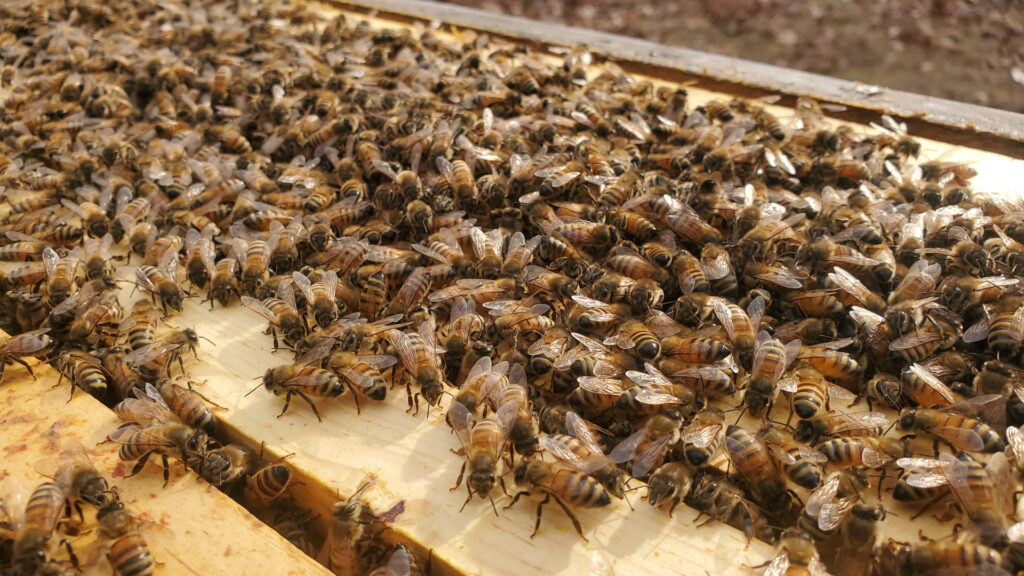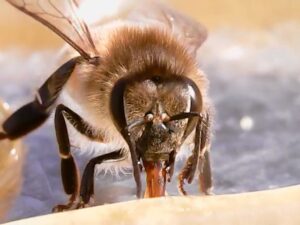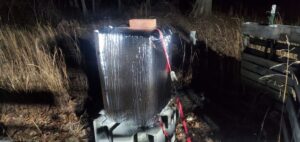How to Read the Signs of an Impending Swarm

It’s one of beekeeping’s most challenging aspects. You want your hive to build in population so they have a large number of foragers. Of course, the foragers are the ones bringing in nectar to make beautiful honey. Just when you think all is going well, BAM! Your hive decided to split on their own and the queen with about half of her loyal followers left for a new home, leaving you with a weak colony that has to raise a new queen and start over. If there was only a sign you could of seen to cue you in to this impending departure.
But most of the time, the signs were there. Here are some tips and tricks to keep tabs on your colony to try and keep them happy and productive.
A rapid explosion in population, especially capped brood cells
This is what you want to see, right? The colony is quickly expanding. You’re excited that this might just be the honey producing hive of the year. But don’t get too excited, as this behavior is also a cue that the queen is trying to build up replacement workers to take over the hive after she leaves with her favorite followers. This can be seen as a lot of bees in the box as well as frames being filled with capped brood from edge to edge.
What can I do? First, they need more room, ASAP! The more bees in the box, the more they will want to swarm to a new home. Add another deep or at least a medium box to the hive. If possible, take at least a few of the brood frames from the lower box and place them in the new box. If you have a medium frame to go into a deep box, go for it. Alternate new or empty drawn comb frames with existing full frames (checkerboarding) to help encourage the workers to take interest in these new empty spaces between their existing frames.
Queen cups and cells are appearing, sometimes in many places
Yikes! The clock is already running and time is against you! How much time depends on how developed the queen cells are when you find them. If they are just empty queen cups, that’s not too bad. Remove them with your hive tool and carry on. Possibly give them more room as in the suggestion above. If the queen cells already have eggs or larvae in them, the tides may already be turning. If you see queen cells with larvae or even fully developed queen cells, pay close attention to the rest of the hive and try to locate the queen to make sure she is still in the hive. If something happened to her such as an injury, these queen cells may be emergency replacement cells and you will want to let them develop so they can raise a new queen. Only if you find the existing queen will you want to move or remove the queen cells. By move the cells, I mean create splits. Some beekeepers believe that once the colony has created queen cells, they have already made up their minds to swarm or replace the queen. You can take the existing queen and a few frames of brood and food (without queen cells) and put them into a new box… essentially swarming for her. Sure, some of the foragers may fly back to the original hive (and they will), that’s okay as long as she has enough capped brood, food, and nurse bees to take care of her until the others hatch and start foraging for themselves. The original hive will then requeen with the cells they have and start over. If you have multiple frames with queen cells and capped brood, you may want to roll the dice and make multiple splits. Sure, the resulting colonies will be considerably smaller and will take that much longer to grow in size, but if you are wanting to ramp up the number of hives to plan for next year’s season, this is a choice you can make.
The queen is looking a bit thin for spring
No, they haven’t been getting into the diet soda for sugar. This is a sign that the attendant bees to the queen are literally running her around and withholding food in order to ger her fit enough to fly. While a bit tedious, this is why I prefer to take video of my inspections and hold the frame close to the camera when I find the queen so I can get a visual record of her appearance from one inspection to the next. One way to try and convince her to stay is to simulate a swarm for her by creating a split with her. Sure, you could try to attach a queen excluder-style entrance reducer to keep her from leaving, but if her weight drops enough, she’ll still be able to slip through the bars.
More drone brood is being raised
While not quite as strong of an indicator as the other signs mentioned, if you happen to notice a sudden uptick in the amount of drone brood on the frames, they may be preparing to swarm as well. Check to make sure they have enough space and are not too crowded and look for queen cells. If you are using a special drone brood frame or perhaps they created their own drone brood frame organically, you could remove that frame from the hive. Shake all the bees off and back into the hive box, then put the frame in a trash bag and place it in a freezer for 3 days. Won’t that kill the drone brood in the frame? YES! However, this also will quickly reduce the varroa mite population as the mites prefer drone brood with their longer development time. After freezing, you can scrape the frame and place it back in the hive for them to reclaim and start rebuilding.


